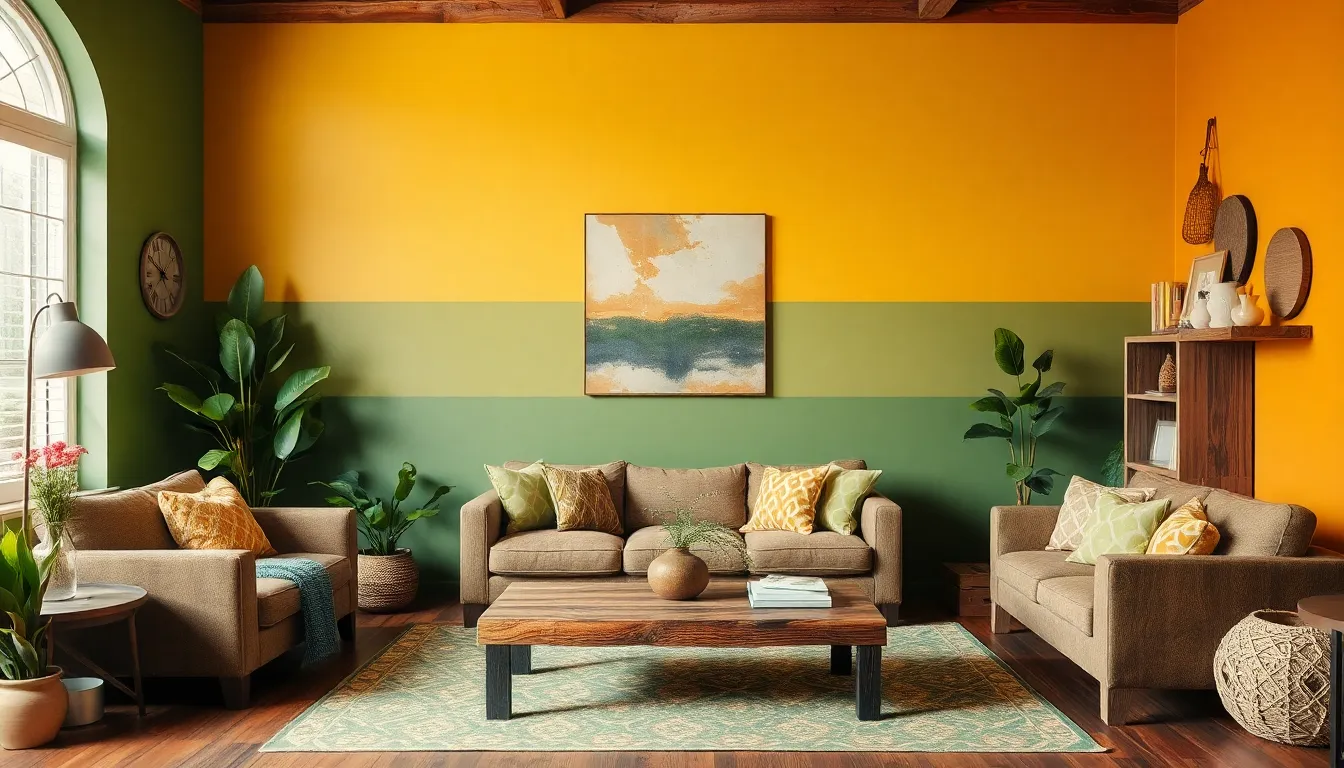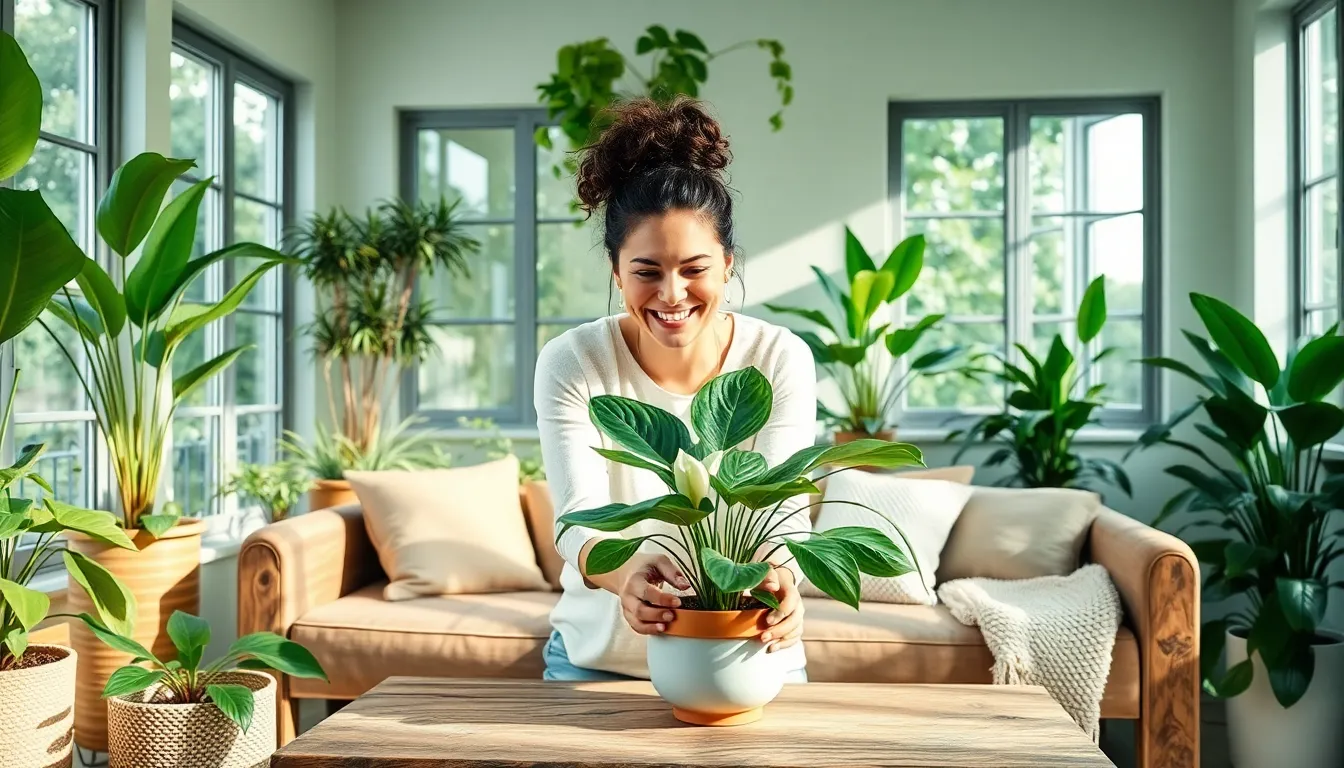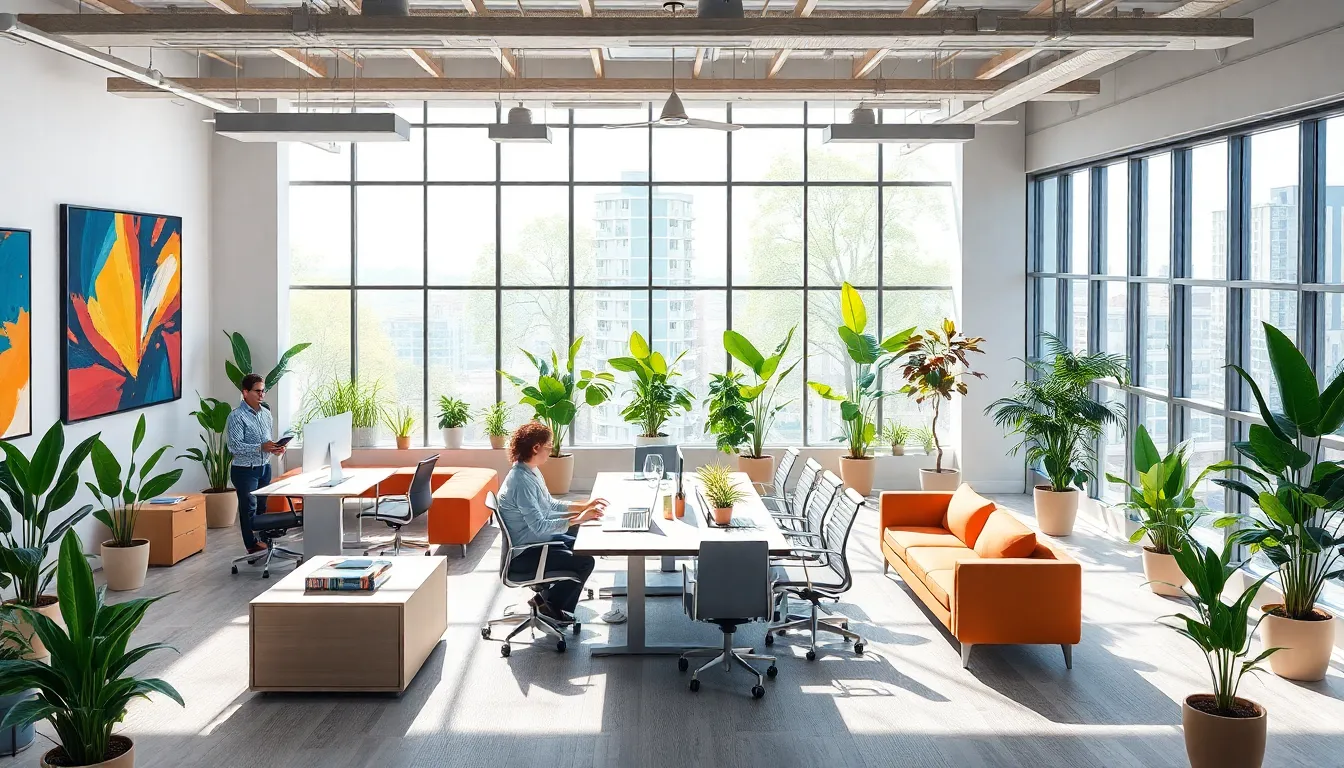In a world where the planet’s health is more important than ever, green interior design isn’t just a trend; it’s a lifestyle choice. Imagine transforming your home into a sanctuary that’s not only stylish but also eco-friendly. It’s like giving Mother Nature a warm hug while sipping your organic green tea. Who wouldn’t want that?
Table of Contents
ToggleUnderstanding Green Interior Design
Green interior design focuses on creating spaces that prioritize sustainability and eco-friendliness. This design approach enhances aesthetics while minimizing environmental impact.
What Is Green Interior Design?
Green interior design integrates sustainable practices into the home environment. It involves using eco-friendly materials, energy-efficient systems, and non-toxic products. Designers emphasize natural light utilization to reduce energy consumption. Incorporating plants not only freshens the air but also enhances the overall aesthetic. Additionally, this design philosophy promotes waste reduction and encourages recycling.
Benefits of Eco-Friendly Spaces
Creating eco-friendly spaces provides multiple advantages for both occupants and the environment. Improved indoor air quality results from the use of non-toxic materials. Reducing energy consumption leads to lower utility bills and a smaller carbon footprint. Enhanced well-being occurs due to the calming presence of nature-inspired designs. Increased property value often follows the adoption of sustainable features. Long-term sustainability becomes achievable through thoughtful design choices that benefit future generations.
Sustainable Materials for Interiors

Sustainable materials enhance green interior design by reducing environmental impact while providing aesthetic appeal. Using these materials promotes a healthier living space.
Recycled and Upcycled Materials
Recycled materials repurpose waste into new products. For instance, reclaimed wood adds rustic charm and reduces deforestation. Upcycled items, such as transformed furniture, bring unique character to interiors while minimizing landfill waste. Options like glass tiles and metal fixtures showcase creativity and sustainability. Choosing these materials supports local economies and conserves resources, encouraging mindful consumption in design.
Natural and Low-VOC Paints
Natural paints utilize ingredients derived from renewable sources. These paints typically avoid harmful chemicals, making them safer for indoor environments. Low-VOC options significantly reduce volatile organic compounds, improving indoor air quality. Brands offer colors ranging from earthy tones to vibrant shades, ensuring aesthetic flexibility. Selecting these paints supports overall health, creating a conducive atmosphere for relaxation and creativity.
Energy-Efficient Design Elements
Energy-efficient design elements play a crucial role in creating sustainable interiors. These features not only lower energy consumption but also enhance comfort and aesthetics.
LED Lighting Solutions
LED lighting solutions provide significant energy savings compared to traditional bulbs. These lights consume up to 75% less energy and last up to 25 times longer. They emit less heat, which reduces cooling costs in warmer months. Homeowners can choose from a variety of styles, including fixtures and bulbs, making it easy to incorporate into existing designs. Adjustable LED options offer versatility in lighting intensity, allowing for customizable atmospheres. Adaptive lighting systems enable users to control their energy usage more effectively, contributing to an eco-friendly lifestyle.
Energy-Efficient Appliances
Energy-efficient appliances represent a smart investment for eco-conscious homeowners. These devices use advanced technology to reduce electricity and water consumption without sacrificing performance. Look for appliances labeled with the ENERGY STAR certification, which indicates they meet or exceed efficiency guidelines. Modern refrigerators, washing machines, and dishwashers can cut utility costs significantly while minimizing environmental impact. Additionally, smart appliances connect to home networks, enabling energy monitoring and control from mobile devices. Prioritizing energy-efficient appliances not only benefits individuals but also supports broader sustainability efforts.
Incorporating Nature Indoors
Bringing elements of nature indoors enhances not only aesthetics but also well-being. Integrating natural materials and plants into interior spaces fosters a refreshing and calming environment.
Biophilic Design Principles
Biophilic design principles focus on connecting individuals with nature. Incorporating organic shapes, natural light, and outdoor views creates a harmonious atmosphere. Utilizing water features and living walls further enhances sensory experiences. These design elements reduce stress and improve overall wellness. Research shows biophilic environments boost creativity and productivity. Combining these principles into interior spaces cultivates an inviting atmosphere that resonates with nature.
Houseplants for Air Quality
Houseplants significantly improve indoor air quality. Varieties like snake plants, peace lilies, and spider plants absorb toxins and produce oxygen. Studies indicate that having just a few plants can cut down airborne pollutants substantially. Placement in well-lit areas ensures they thrive while enhancing the decor. Regular maintenance of these plants requires simple tasks like watering and occasional pruning. Incorporating houseplants creates a lively, healthier indoor environment while adding visual appeal.
Creative Green Design Ideas
Incorporating creativity into green design enhances both aesthetics and sustainability. Various elements contribute to an eco-friendly interior while remaining stylish.
Multifunctional Furniture
Opt for multifunctional furniture that maximizes space and minimizes material use. Sofas that convert into beds and coffee tables with storage capabilities exemplify this concept. These pieces serve dual purposes, reducing clutter in small living spaces. Purchasing items made from recycled materials furthers sustainability. Designers focus on sleek, modern styles to maintain aesthetic appeal. Investing in such furniture not only supports an eco-conscious lifestyle but also enhances the overall functionality of a room.
Eco-Friendly Textiles
Choose eco-friendly textiles that add comfort and reduce environmental impact. Organic cotton and hemp represent sustainable fabric options that require fewer pesticides and water. These materials provide softness and durability while promoting health benefits. Incorporating natural dyes and treatments ensures the textiles remain non-toxic. Consider using recycled polyester for upholstered items, which uses less energy in production. Prioritizing sustainable textiles nurtures eco-friendly interiors while contributing to a healthier home environment.
Embracing green interior design is more than a trend; it’s a commitment to a sustainable lifestyle. By integrating eco-friendly materials and energy-efficient solutions, individuals can create spaces that reflect their values while enhancing their well-being. The beauty of this approach lies in its ability to merge style with sustainability, proving that homes can be both aesthetically pleasing and environmentally responsible.
Incorporating elements of nature and multifunctional furniture not only elevates the design but also promotes healthier living environments. As more people recognize the importance of mindful consumption and its impact on future generations, green interior design will continue to inspire creativity and innovation in homes everywhere.






